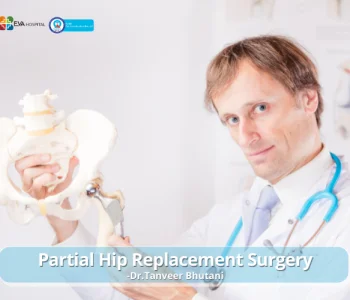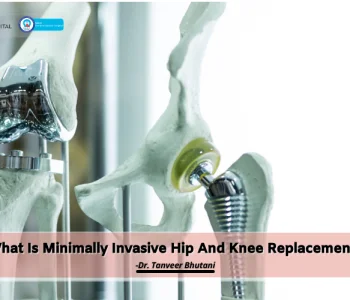Tips for a Successful Total Hip Replacement Recovery
 Hip Replacement surgery
Hip Replacement surgery
Tips for a Successful Total Hip Replacement Recovery
Surgery is one of the most crucial & onerous steps in any treatment plan. Surgery may be necessary for various reasons, including the confirmation of a diagnosis, the removal of a growth or obstruction of tissue, the repair or realignment of tissues or organs, the implantation of devices, the rerouting of blood vessels, or the transplantation of tissues or organs. Additionally, some people choose surgery for cosmetic purposes.
The American Academy of Orthopaedic Surgeons (AAOS) estimates that more than 450,000 total hip replacement surgeries are performed annually in the U.S.A. By 2030, this number is anticipated to increase to 635,000 annual surgeries.
A total hip replacement involves removing the damaged hip joint parts and replacing them with artificial metal, plastic, or ceramic ball and socket components. Experts must carry out the surgery to ensure safe and successful results because it is an extensive procedure with a protracted recovery period and some risk of complications. The patient is advised to walk with the help of a walker or other assistive equipment under the supervision of medical professionals after having hip replacement surgery for 24 hours. The doctor advises the patient to move cautiously following surgery to safeguard the replacement hip as it heals.
Read on to discover the steps you may personally do to speed up your hip replacement surgery recovery time.
Adapt an Exercise Routine
After surgery, the patient must gradually move the reconstructed hip joint, and eventually, the movement must get progressively more flexible. Patients can gain from physical therapy to strengthen the muscles surrounding their hip joints and improve mobility. On the first day, the patient can typically sit, stand, and try walking. Later, a walker or crutches can be used for additional activities.
Moreover, patients must include a 20–30 minute exercise session in their recovery program once mild physical activity is allowed. This exercise session must be done twice or three times daily. Supervised hydrotherapy and physiotherapy are also crucial for healing in the weeks following surgery. Before receiving advice from the orthopedic doctor, the patient must refrain from participating in sports, swimming, hiking, running, or working out.
Stick to a Healthy Diet
The “hip joint” is the largest weight-bearing joint of our body. If the patient is overweight, the physical stress on the new hip prosthesis may increase the risk of postoperative complications and cartilage tissue deterioration.
Therefore, a healthy, balanced diet is crucial while recovering from increasing the longevity of the orthopedic prosthesis. For speedy recovery, try incorporating all the vital nutrients into your diet.
Practice Physical Exercise to Amplify the Circulation of Blood
To maintain the health of the operated site, adequate blood circulation is required. The patient must take precautions to prevent any blood clots or blocked blood flow. To ensure healthy blood flow, perform the following exercises:
Squeezing the thigh and calf repeatedly
Leg exercises for full motility
Walking with or without assistance from a cane or walker
Furthermore, to maintain long-term health and mobility following surgery, the patient must adhere to and take care of the crucial steps and measures mentioned and advised by their doctor.
Preparing Home for Post-Surgery Comfort
After a total hip replacement surgery, patients observe difficulty in optimal motility and performing everyday house chores. If you know your surgery schedule, it is essential to make some modifications in your home beforehand. This helps you efficiently access your belongings and other essentials with minimal body movement.
Ensure to keep a caretaker, family, or acquaintance to help you run daily errands, including cooking, cleaning, bathing, and more.
Deciding to undergo total hip replacement surgery is a difficult task. It is recommended if your injured or diseased hip leads to consistent all-day pain, stiffness in a hip, or debilitating pain that affects your everyday activities.
Pay More Attention to Wound Care
To make your total hip replacement surgery successful, you must take good care of the wound or affected area. Ensure proper wound dressing to prevent excessive bleeding, fluid absorption, and additional care for newly forming tissues. It results in a favorable environment for a quick healing process.
Most of your healing process is followed at home, so it is pivotal for you to take proper wound care. With proper care, you can avoid a risk of infection.
The infection can complicate your condition in any surgery, which is more severe in hip joint replacement surgery. In this condition, bacteria might stick to the implant, which creates problems in treating infection. To rectify this medical complication, you might need to undergo surgery again.
Eva Hospital: One-Stop Destination for Unparalleled Care
Effective and speedy recovery from a complete hip replacement is made possible by taking careful precautions and deliberate efforts during the healing process. Contact the top orthopedic surgeons at Eva Hospital regarding total hip and knee replacement surgery.
Get in touch with Dr. Tanveer Singh Bhutani, a seasoned orthopedic surgeon with years of training and expertise. He has completed several hip replacement operations and relieves people with agonizing hip joint pain so they can get back to their daily activities.
Schedule an appointment for more information on total hip replacement surgery from our experts!









